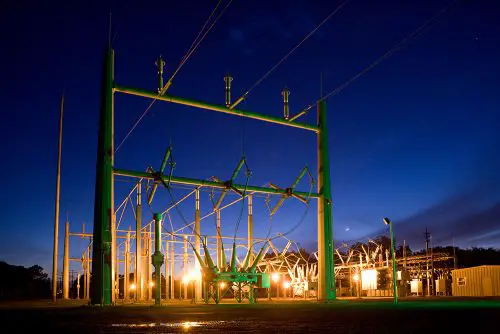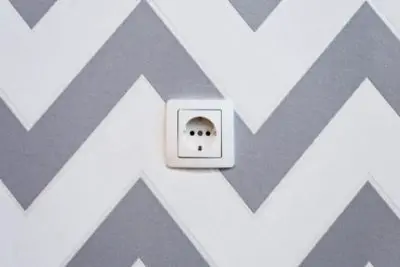Affiliate Disclosure: As an Amazon Associate I earn from qualifying purchases.
Powerline adapters come with some of the benefits of a wired Ethernet connection without the hassle of installing any additional cabling by simply plugging into a mains socket. As the mains electricity supply is involved, it does beg the question as to whether powerline adapters need to be on the same circuit to function?
Powerline adapters should work even when connected to different electrical circuits providing they meet at the same distribution board, but they will not perform as well as if they were connected to the same circuit. The quality of the electrical wiring will also influence how well they perform.
Some people have reported issues when using different circuits, whereas others have found them to work fine. That being said, based on my research, the majority of people have found powerline adapters to work across different circuits, albeit seeing a performance drop.
What Is an Electrical Circuit?
If like me, prior to the research I did for this article, you aren’t particularly familiar with electricity and how electrical circuits work, it doesn’t hurt to learn the basics. You may find this extra knowledge comes in handy when you are building your home network.
An electrical circuit is simply a path in which the electrons from a voltage or current source follow.
The point where the electrons enter can be considered the start of the circuit and is known as the “source” of electrons.
Where the electrons leave the circuit is called the “earth ground” or “return”. It is called this as the electrons always end up back at the source where the complete the circuit. They simply return to the source.
The part of an electrical circuit between the source and the return is called its “load”. In your case, the powerline adapter you are plugging in becomes part of the circuit and is considered to be the load.
Electrical circuits can use two different forms of electrical power known as “alternating current” (AC) and “direct current” (DC). AC typically powers larger appliances and motors, with it being generated by and originating from large power stations.
DC powers battery operated devices and electronics such as a flashlight or a cellphone.
Converters can be used to change AC to DC and vice versa should it be needed.
You may also like: Do Powerline Adapters Use a Lot of Electricity?

What Are the Different Types of Electrical Circuits?
Within your average home, three different types of electrical circuits can be found.
- Ring circuits
- Radical circuits
- Lighting circuits
Ring Circuits
Ring circuits are the most common method of installing electrical outlets in a home, with each floor of the home usually having its own circuit.
The sockets are arranged to form a continuous loop with the circuit beginning and ending at the consumer unit. The twin and earth cables begin at the consumer unit, run through the walls connecting to each of the plug sockets, and then back to the same terminal in the consumer unit.
Power can be delivered to the plug sockets in either direction around the loop which helps to reduce the load on the cable.
Radial Circuits
Ring circuits are now considered to be the standard for electrical circuits, but some homes may still utilize the old-fashioned radial circuits.
They are different from ring circuits as the cable that travels through each outlet doesn’t return to the consumer unit. Instead, it terminates at the last power outlet in the circuit.
Power is forced to travel in one direction in a radial circuit and therefore can only serve a smaller area otherwise the load on the cable would be too great.
Lighting Circuits
Given the name, these circuits only serve the purpose of providing lighting. Although it isn’t really relevant to powerline adapters, it doesn’t hurt to know a bit about them.
Lighting circuits are essentially radial circuits that can take two forms, with a combination of both often being used.
The first form is known as loop-in which has a cable running from the consumer unit out to multiple ceiling roses which also link directly to the lighting pendant and its switch.
The other junction box form isn’t as commonly found these days and is a bit more old-fashioned. Junction boxes are positioned in a suitable location along the main cable to provide power to a lighting pendant but have a separate connection to each light switch.
This method is often used, even these days, when adding additional lighting to an already existing circuit.
Do Powerline Adapters Work on Different Ring Circuits?
As we know now, all ring circuits begin and end at the consumer unit. This leads us to ask the question as to whether powerline adapters will still work despite being connected to different ring circuits as all roads lead back to the consumer unit.
Let’s assume your home uses ring circuits and you have one of your adapters connected to a ring circuit downstairs and the other connected to a different circuit upstairs.
Providing the electrical wiring within both ring circuits is in a suitable condition, you should see communication between the two powerline adapters despite them being connected to different circuits.
It has been known that consumer units using RCD (Residual Current Devices) or the powerline adapters being plugged into extension leads with surge protection can cause issues, which I suspect leads to the assumption that powerline adapters simply don’t work when connected to different ring circuits.
So yes, powerline adapters should work across different ring circuits, but there are many variables involved that differ from household to household when it comes to electrical wiring.
The caveat being that some people have reported a decrease in performance when using a pair of powerline adapters on different ring circuits. Others have found having to frequently re-pair the adapters, too.
Related article: Do Powerline Adapters Work Through Extension Leads?
Conclusion
It was challenging to find a definitive answer to the question on whether powerline adapters need to be on the same circuit to function, but the conclusion I have come to based on the research I have done is that, yes, they should function.
They certainly won’t perform as well as if they were connected to the same circuit, but with most homes having multiple circuits that want powerline adapters on different floors, this isn’t always practical.
The majority of people using powerline adapters connected to different circuits have found them to work.
My guess is that those that claim they don’t work have a fault that lies elsewhere, but assume that the adapters being connected to different circuits is the root cause of the problem.
Given how complex electrical wiring is, how greatly the electrical setup differs from home to home and how many variables are involved, it is understandable to see why they would think this.
